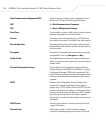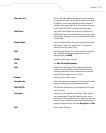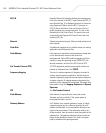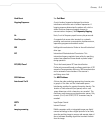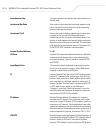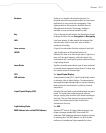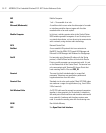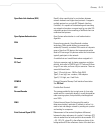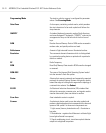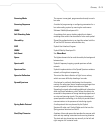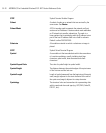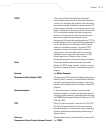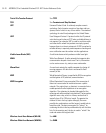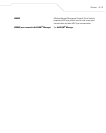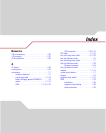
MC9000-K/S for Embedded Windows® CE .NET Product Reference Guide
GL-14
Programming Mode The state in which a scanner is configured for parameter
values. See Scanning Mode.
Quiet Zone A clear space, containing no dark marks, which precedes
the start character of a bar code symbol and follows the
stop character.
QWERTY A standard keyboard commonly used on North American
and some European PC keyboards. “QWERTY” refers to the
arrangement of keys on the left side of the third row of
keys.
RAM Random Access Memory. Data in RAM can be accessed in
random order, and quickly written and read.
Reflectance Amount of light returned from an illuminated surface.
Resolution The narrowest element dimension which is distinguished
by a particular reading device or printed with a particular
device or method.
RF Radio Frequency.
ROM Read-Only Memory. Data stored in ROM cannot be changed
or removed.
ROM-DOS The name of the licensed Disk Operating System loaded
into the terminal’s flash file system.
Router A device that connects networks and supports the required
protocols for packet filtering. Routers are typically used to
extend the range of cabling and to organize the topology of
a network into subnets. See Subnet.
RS-232 An Electronic Industries Association (EIA) standard that
defines the connector, connector pins, and signals used to
transfer data serially from one device to another.
Scan Area Area intended to contain a symbol.
Scanner An electronic device used to scan bar code symbols and
produce a digitized pattern that corresponds to the bars and
spaces of the symbol. Its three main components are:
1. Light source (laser or photoelectric cell) - illuminates a
bar code.
2. Photodetector - registers the difference in reflected light
(more light reflected from spaces).
3. Signal conditioning circuit - transforms optical detector
output into a digitized bar pattern.



